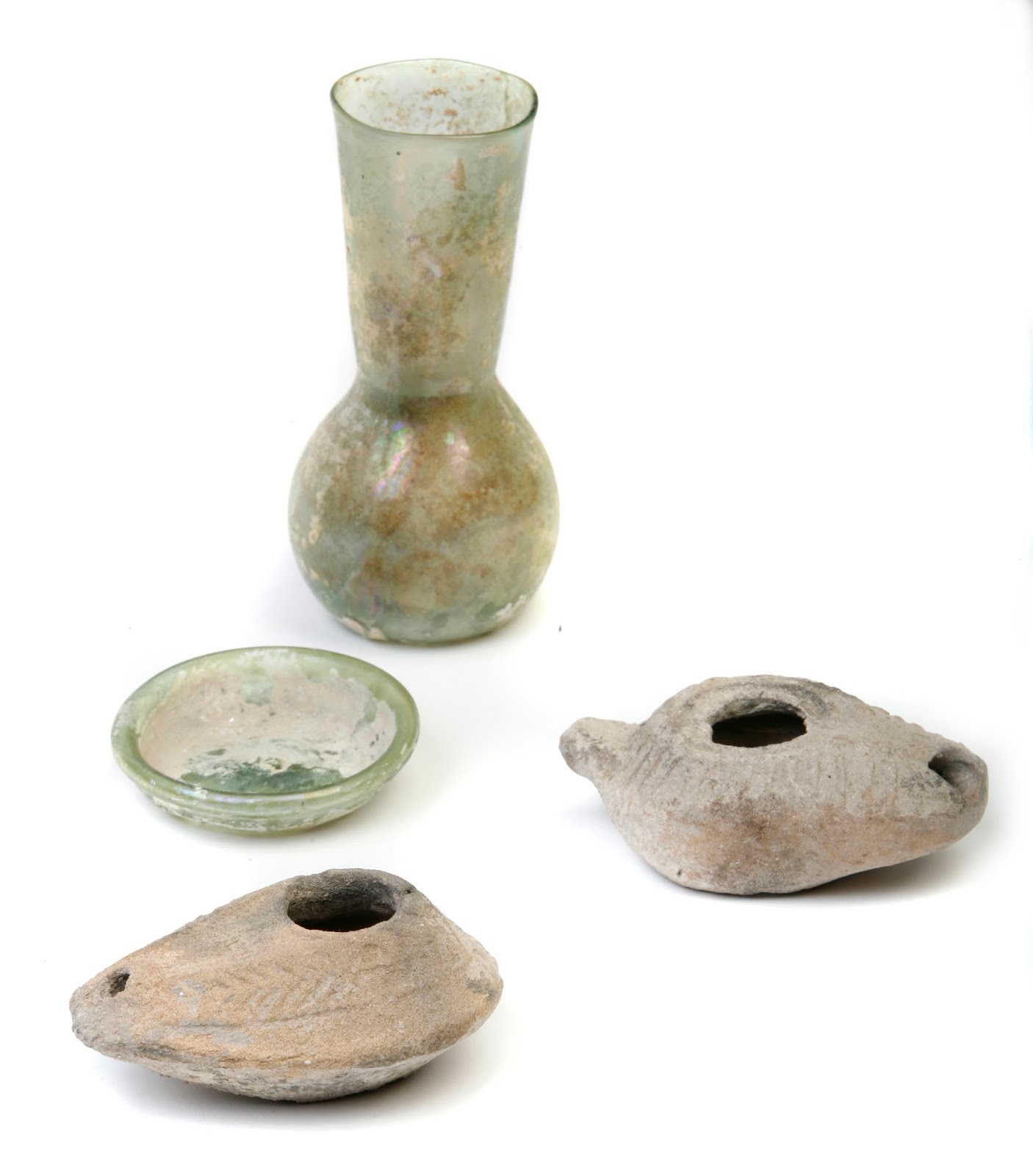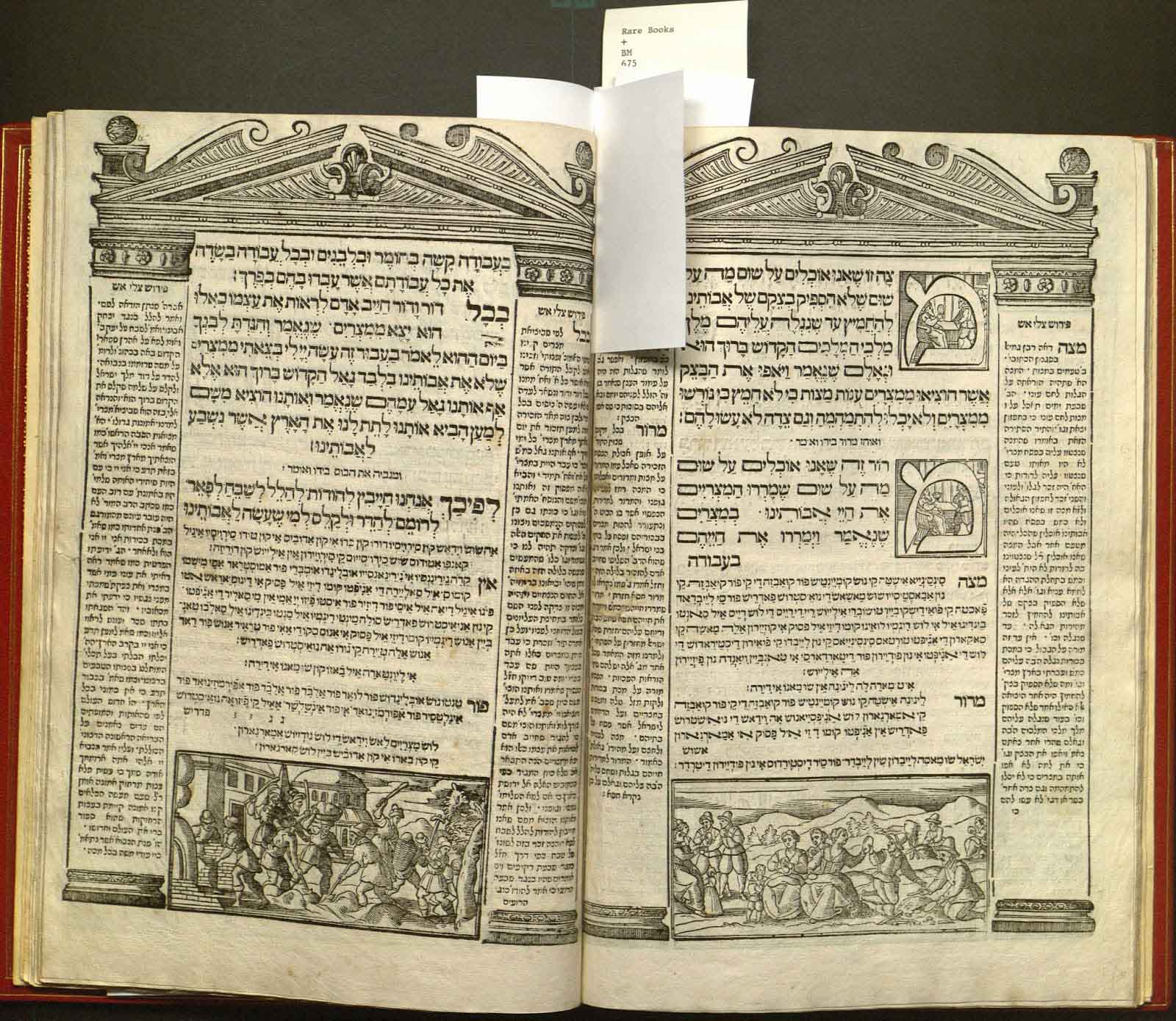Judaica Materials in Special Collections
August 1, 2017
Jim Rosenbloom, Judaica Librarian
 The Brandeis University Library houses a major Judaica research collection. We have extensive holdings in subjects as diverse as Bible, rabbinics, Jewish philosophy and mysticism, and Hebrew and Yiddish literatures. Our Jewish history collection extends from ancient times through the Middle Ages to modern times, including Israel, the Holocaust and American Jewry. Books in the stacks are supplemented by microform and electronic databases. In addition, we have a number of rare (or unique) fine books, documents and objects in the University Archives and Special Collections. Our spotlight this month is devoted to these special materials.
The Brandeis University Library houses a major Judaica research collection. We have extensive holdings in subjects as diverse as Bible, rabbinics, Jewish philosophy and mysticism, and Hebrew and Yiddish literatures. Our Jewish history collection extends from ancient times through the Middle Ages to modern times, including Israel, the Holocaust and American Jewry. Books in the stacks are supplemented by microform and electronic databases. In addition, we have a number of rare (or unique) fine books, documents and objects in the University Archives and Special Collections. Our spotlight this month is devoted to these special materials.

Below is a tiny sampling of our rare books in the subject areas of hagadot, prayer books, rabbinics, Bible commentaries, Hebrew grammar, philosophy and history:
-
Seder Hagadah Shel Pesah (Venice, 1629), following the Roman ritual tradition, with a translation into Spanish
-
The multi-volume mahzor for the holidays Sha’ar Bat Rabim (Venice 1711-1715)
-
Levi ben Gershon (Gersonides), 1288-1344: Perush al ha-Torah (Venice, 1547)
-
Maimonides, 1135- 1204: Sefer ha-Mitsvot (Venice, 1550)
-
Maimonides: Hilkhot Bikurim (Leiden, 1702)
-
Levi ben Gershon: Milhamot ha-Shem (Riva di Trento, 1560)
-
David Kimhi, circa 1160-cica 1235: Sefer ha-shorashim (Venice, 1529)
-
David Gans, 1541-1613: Tsemah David (Frankurt am Main, 1692)

Other rare works include Josephus’ De Antiquatibus ac de Bello Judaico (Venice, 1499) and Orden de Oraciones de los Cinquo Ayunos del Anyo (Amsterdam, 1618) (the latter is a collection of prayers for five Jewish fast days). As well, we hold a copy of David Ben-Gurion’s Israel: a Personal History (1971), containing the following inscription: “To Brandeis University, founded in the year of Israel’s rebirth” — signed by D. Ben-Gurion on March 12, 1971.

We also own some wonderful facsimiles of medieval illuminated (decorated with color illustrations) manuscripts. Several are hagadot and prayer books. One of these reproductions is called the Rothschild Miscellany. Its 948 pages contain 70 religious and secular works. The illustrations are stunning, and holding a physical copy that exactly recreates every physical aspect of the original is a special experience, quite different from online viewing.
 Jewish life in Europe is represented in many of our special collections. We own the manuscript of the Book of Records and Accounts of the Jewish Community in Venice (1735-1792). This is an excellent source of information on the daily activities of some of Venice’s Jews. The Leon Lipschutz collection of Dreyfusiana and French Judaica is a rich and fascinating collection which documents the Dreyfus Affair in turn-of-the-century France, and also contains varied documents relating to the lives and work of Jews in France from the Revolutionary period to the mid-20th century. Some of the materials in the Lipschutz collection are closely related to those found in the Consistoire Central Israélite de France collection. Containing seven linear feet of French Consistory materials and two linear feet of international Judaica, the Consistoire collection provides a sweeping view of the French and worldwide Jewish communities from the mid-18th through the first third of the 20th century.
Jewish life in Europe is represented in many of our special collections. We own the manuscript of the Book of Records and Accounts of the Jewish Community in Venice (1735-1792). This is an excellent source of information on the daily activities of some of Venice’s Jews. The Leon Lipschutz collection of Dreyfusiana and French Judaica is a rich and fascinating collection which documents the Dreyfus Affair in turn-of-the-century France, and also contains varied documents relating to the lives and work of Jews in France from the Revolutionary period to the mid-20th century. Some of the materials in the Lipschutz collection are closely related to those found in the Consistoire Central Israélite de France collection. Containing seven linear feet of French Consistory materials and two linear feet of international Judaica, the Consistoire collection provides a sweeping view of the French and worldwide Jewish communities from the mid-18th through the first third of the 20th century.

The American Jewish community is also well-represented in Special Collections Judaica materials. The Leo Frank trial collection is one of the highlights. Frank’s trial and lynching led to the formation of the Anti-Defamation League. The papers of Rabbi Stephen S. Wise, owned jointly with the American Jewish Historical Society, reflect Wise’s life as a leading Reform rabbi and leader of the American Zionist movement.
Our rare books relating to the American Jewish community include a number of volumes by Isaac Leeser, a 19th-century Jewish author and communal leader. Other highlights are Isaac Mayer Wise’s Tefilot Bene Yeshurun: Minhag Amerika (1870) and David Einhorn’s Book of Prayers for Israelitish Congregations (1872).

Among a large collection of the personal and professional papers of Justice Louis D. Brandeis are many materials relating to Justice Brandeis’ Zionist work. Of particular interest in this collection is something which looks on the outside like a very well-decorated Scroll of Esther, which is actually a “thank you” scroll presented by the community of Jerusalem to Justice Brandeis when he visited the city in 1919. Brandeis was a leader of the American Zionist movement, and the Jerusalem city leaders had this scroll created in fancy Biblical Hebrew in order to show its appreciation of his activities on behalf of Zionism.

A major focus in our collections is Jewish feminism. Included in this category are the papers of Aviva Cantor, E.M. Broner, Ma'yan, Marcia Freedman and the feminist magazine Lilith. The magazine’s archive is a treasure trove of information on decades of Jewish feminist activity and creativity. We continue to seek additional feminist collections.
The Holocaust is also well represented in Special Collections. The Helmut Hirsch collection documents the life and work of Hirsch, a young German Jewish artist murdered in 1937 for his anti-Nazi activities. His archive includes his correspondence, notebooks, diaries and artwork. The Jewish Resistance collection contains propaganda material, individual testimonies, newsletters and other documents pertaining to Jewish resistance movements during World War II. One particularly fascinating German antifascist pamphlet from 1933 is disguised as an owner’s manual for an Electrolux vacuum cleaner. The Theresienstadt concentration camp documents consists of 200 daily bulletins of the “Jewish Self-Administration” of the camp. While the man who collected these documents did not survive, his wife and daughter lived to donate this collection to Brandeis. The Spitzer family papers tell the story of a Czech Jewish family from before, during, and after World War II. The collection documents the fullness of their lives in Europe before the Holocaust claimed many members of the family and follows the survivors’ travels to the Boston area.
One particularly fascinating German antifascist pamphlet from 1933 is disguised as an owner’s manual for an Electrolux vacuum cleaner. The Theresienstadt concentration camp documents consists of 200 daily bulletins of the “Jewish Self-Administration” of the camp. While the man who collected these documents did not survive, his wife and daughter lived to donate this collection to Brandeis. The Spitzer family papers tell the story of a Czech Jewish family from before, during, and after World War II. The collection documents the fullness of their lives in Europe before the Holocaust claimed many members of the family and follows the survivors’ travels to the Boston area.
 Some of our more unusual collections include a large Yiddish sheet music collection and The Bernice and Henry Tumen collection. The Tumen collection includes 177 Jewish religious and ceremonial objects, most of which date to the 19th and 20th centuries. It includes everything from a Scroll of Esther and Havdalah spice boxes to amulets and Kiddush cups. Many significant items from this collection are on permanent display on the mezzanine level of Goldfarb Library.
Some of our more unusual collections include a large Yiddish sheet music collection and The Bernice and Henry Tumen collection. The Tumen collection includes 177 Jewish religious and ceremonial objects, most of which date to the 19th and 20th centuries. It includes everything from a Scroll of Esther and Havdalah spice boxes to amulets and Kiddush cups. Many significant items from this collection are on permanent display on the mezzanine level of Goldfarb Library.
 In University Archives, we are fortunate to house a number of collections related to the history of Brandeis University itself, including the NEJS faculty papers of Alexander Altmann, Marvin Fox, Nahum Glatzer, Benjamin Halpern, Leon Jick and Marshall Sklare. We also house the papers of former chaplain Albert Axelrad. We own a historical collection of the papers of Brandeis Hillel, as well as papers of President Abram Sachar, from his activities and correspondence related to National Hillel.
In University Archives, we are fortunate to house a number of collections related to the history of Brandeis University itself, including the NEJS faculty papers of Alexander Altmann, Marvin Fox, Nahum Glatzer, Benjamin Halpern, Leon Jick and Marshall Sklare. We also house the papers of former chaplain Albert Axelrad. We own a historical collection of the papers of Brandeis Hillel, as well as papers of President Abram Sachar, from his activities and correspondence related to National Hillel.
 This is but a sample of our wonderful rare (some unique) Judaica materials. You are invited to look online at the University Archives and Special Collections page on the Library website, as well as to search for individual book titles in our online catalog. These materials are open to all and we welcome all visitors and questions. Enjoy!
This is but a sample of our wonderful rare (some unique) Judaica materials. You are invited to look online at the University Archives and Special Collections page on the Library website, as well as to search for individual book titles in our online catalog. These materials are open to all and we welcome all visitors and questions. Enjoy!
